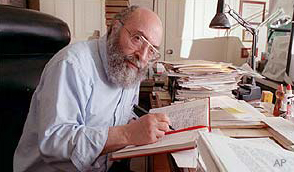“Thus there is one Torah, and this Torah has two sources: the word of God committed to writing, and the parallel system of law transmitted orally by the sages of the tradition. This oral tradition was first set down in writing in the second century of the Common Era by a great sage of the Talmudic period. The early written oral tradition is called the Mishnah, which means, study or oral law, in contradistinction to the Mikra, which means reading and is the term applied to the recitation of a text of Scripture.
“The Rabbinic discussions of the Mishnah which took place in the various Jewish academies in Palestine and Babylonia are called Gemara, which means completion — the complete mastery or study of the Mishnah. The oral discussions on the Mishnah were ultimately set down in written form.
“Those oral discussions which took place in the Palestinian academies were set down in written form, togther with the pertinent texts of the Mishnah, at about the beginning of the fifth century of the Common Era [400s]. This is the Palestinian Talmud.
“The discussions that occurred in the Babylonian academies were set down in final written form, also togther with the pertinent texts of the Mishnah, in the sixth century [500s]. This is the Babylonian Talmud. In matters pertaining to Jewish religious law, the Babylonian Talmud is regarded as the more authoritative of the two because its teachers lived later than those mentioned in the Palestinian Talmud and because it was the first of the two Talmuds to reach the Jewish communities of the Western world.
“Many Orthodox Jewish scholars believe that the printed version of the Babylonian Talmud is the fixed and final depository of the oral tradition and that its teachings are identical in date, origin, and sanctity to the teachings which are derived from the interpretation of Scripture itself.”
Passage quoted from: The Promise, a novel by Chaim Potok (New York: Fawcett World Library, 1969), chap. 15, pages 341-342. See my review of his The Chosen elsewhere.
See sample pages from the Babylonian Talmud, including phrases from the Mishnah with Gemara commentary: Sanhedrin 43a & the New Testament. English only.
He graduated from Yeshiva University in 1950 with a BA in English Literature. After four years, he graduated from the Jewish Theological Seminary of America as a Conservative Rabbi. After further studies in Hebrew literature and rabbinic ordination, he joined the U.S. Army as a chaplain and served in the Korean War. He died of cancer in 2002 at age 73.
